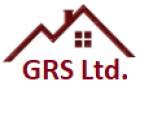Chimney Experts in South East of England
Call Out Form

Chimney Flashings
Chimney flashing is a sheet of metal installed around the area where the chimney meets the roof . Flashing ensures that the connection between the chimney and roof is watertight.
Chimney Flaunching
This is the sloping later of cement or mortar embedding the base of a chimney pot and allowing a slope gradient to drain water.


Chimney Cowels
A cowl is a usually hood-shaped covering used to increase the draft of a chimney and prevent backflow. The cowl, usually made of galvanized iron or plasticis is fitted to the chimney pot to prevent wind blowing the smoke back down into the room below, this can also be installed as a wild life prevention stopping birds entering or nesting within the chimney opening.

Chimney Pointing
Chimney repointing is the process of repairing the mortar joints between individual bricks or stones in a masonry structure.
Chimney tuckpointing is the duty of removing the old mortar joint material and replacing it with a new one.
Chimney Pots
The reason we have chimney pots is that it will help prevent rain from entering your chimney.
When water enters the chimney, fireplace dampers can rust and the firebox back walls can start to breakdown and will then have to be repaired. This water can also lead to the liner and actual brickwork deteriorating.


Chimney Removal
You should only reduce or remove your chimney if you’re absolutely sure it isn’t providing ventilation or being used as a flue by any heat-producing appliance.
Actual chimney breasts form part of the structure of a house – once removed, the addition of support beams may need to be incorporated to support any masonry above. The services of a structural engineer are essential in ensuring the safe removal of a real chimney breast.


